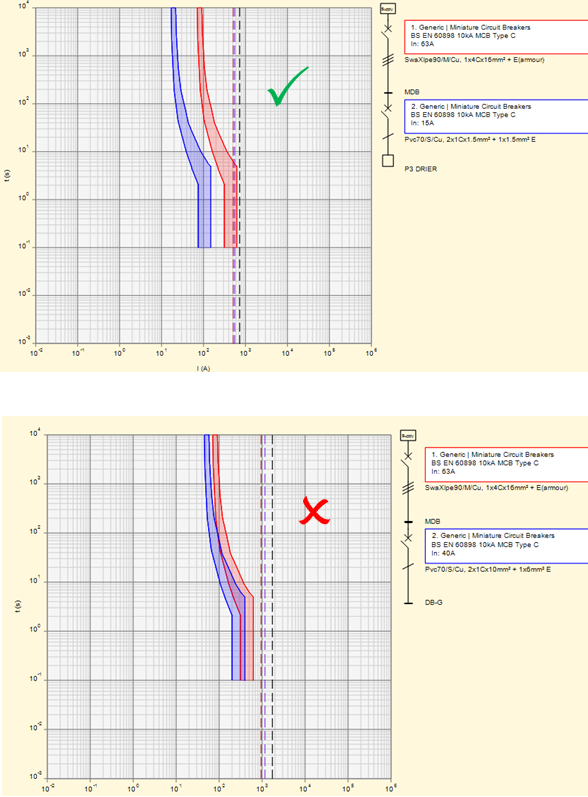Protective Devices Discrimination Problems
The purpose of discrimination is to disconnect only the faulty circuit from the distribution network while maintaining the upstream electrical installation active.
Discrimination can be either total or partial. Discrimination is said to be total if discrimination between the upstream and downstream protective devices is provided up to the value of the maximum prospective short-circuit current at the downstream protective device.
Protective devices discrimination problems are tricky to resolve and sometimes may require a change to the design parameters, eventually affecting the cost of the installation. In some cases the engineer may decide to skip some of the checks and accept that the design will contain discrimination problems. According to regulation, discrimination (or selectivity) is demanded when it is necessary to prevent danger or when it is required for proper functioning of the installation.
ElectricaOM performs discrimination checks between the time-amperes curves of the protective devices, where overlapping curves indicate a discrimination problem. When the manufacturer's energy-based discrimination data are available and the fault condition is causing operation of the protective device below 0.1 sec, the checks are performed based on the manufacturer's discrimination tables.
In this tutorial we are using generic protective devices.
The images below show two cases. The first is a successful discrimination study, with no overlapping between the curves. The second study fails, with the curves overlapping.
Fixing Discrimination Problems
